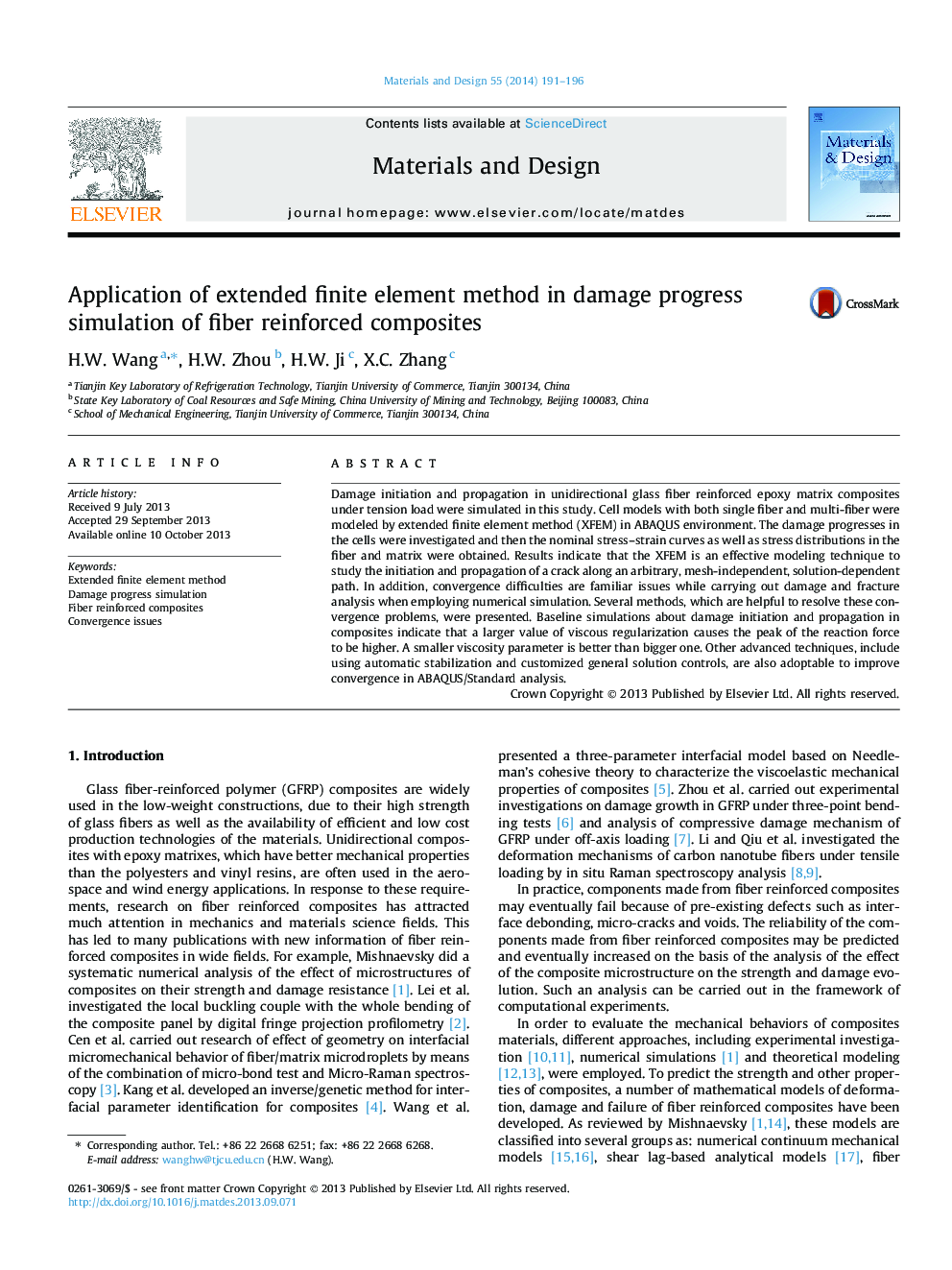| کد مقاله | کد نشریه | سال انتشار | مقاله انگلیسی | نسخه تمام متن |
|---|---|---|---|---|
| 829525 | 1470342 | 2014 | 6 صفحه PDF | دانلود رایگان |
• Damage propagation in GFRP under tension load was simulated by employing XFEM.
• Fiber cracks result in stress concentration in matrix, which can induce crack.
• Convergence issues in ABAQUS while carrying out damage simulation were discussed.
Damage initiation and propagation in unidirectional glass fiber reinforced epoxy matrix composites under tension load were simulated in this study. Cell models with both single fiber and multi-fiber were modeled by extended finite element method (XFEM) in ABAQUS environment. The damage progresses in the cells were investigated and then the nominal stress–strain curves as well as stress distributions in the fiber and matrix were obtained. Results indicate that the XFEM is an effective modeling technique to study the initiation and propagation of a crack along an arbitrary, mesh-independent, solution-dependent path. In addition, convergence difficulties are familiar issues while carrying out damage and fracture analysis when employing numerical simulation. Several methods, which are helpful to resolve these convergence problems, were presented. Baseline simulations about damage initiation and propagation in composites indicate that a larger value of viscous regularization causes the peak of the reaction force to be higher. A smaller viscosity parameter is better than bigger one. Other advanced techniques, include using automatic stabilization and customized general solution controls, are also adoptable to improve convergence in ABAQUS/Standard analysis.
Journal: Materials & Design - Volume 55, March 2014, Pages 191–196
